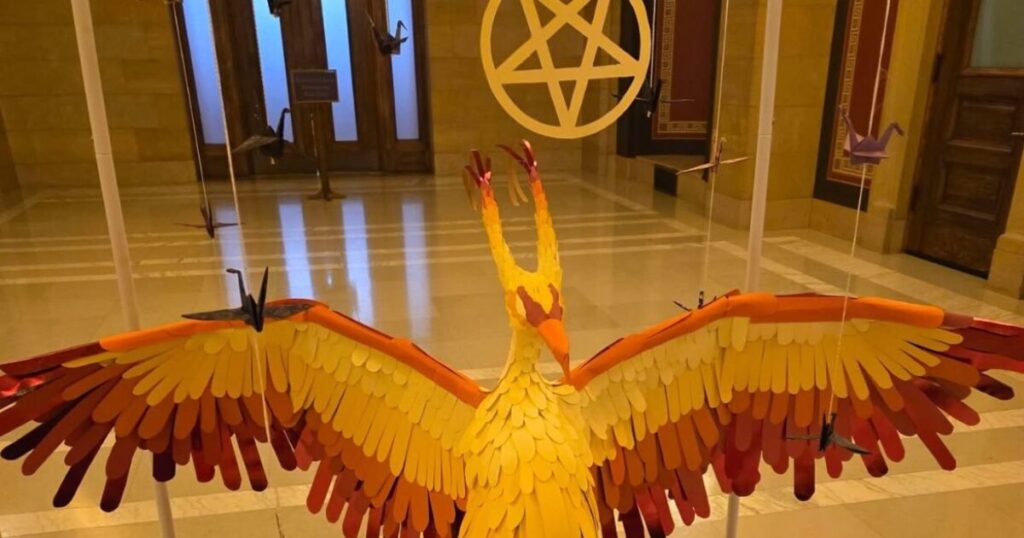In a notable event revealing the evolving landscape of religious expression in the United States, members of the Minnesota Satanic Temple proudly inaugurated their first-ever “holiday” display at the Minnesota Capitol Building. This development came amidst a backdrop of holiday celebrations and sparked both interest and controversy. The Minnesota Satanists publicly declared their excitement with chants of “Hail Satan!” signaling their intention to assert their beliefs in a public sphere often dominated by more traditional religious displays. The installation of such a display raises critical questions about the balance between freedom of expression and the potential for divisive reactions among various groups.
The display’s presence seems to have garnered a muted response from local Democratic leaders, as no officials have explicitly disavowed the installation. This silence may indicate a broader strategy within the Democratic Party to embrace pluralism and foster an environment that accepts diverse beliefs. However, this scenario also shines a light on the tension between the acceptance of these displays and the values held by many constituents who may be uncomfortable with the imagery associated with satanic worship. Minnesota, under Governor Tim Walz’s leadership, is navigating this debate, which pits traditional religious beliefs against the rights of minority groups to express their own faith publicly.
This incident in Minnesota is not isolated; it reflects a wider trend across the U.S., as similar displays have emerged in other states as well. For example, in Iowa, a veteran named Michael Cassidy made headlines last year when he beheaded a satanic altar featuring a statue of Baphomet at the Iowa Capitol. This act was seen by many as a hate crime, highlighting the sometimes violent pushback that such displays can provoke. In this instance, the altar was sanctioned by the Iowa Legislature, showcasing the complex legal and moral arguments surrounding the public display of religious symbols.
Further, the idea of Satanic displays is not restricted to Minnesota or Iowa alone. Last year, the Satanic Temple also showcased a similar display at the Michigan State Capitol, where various congregations collaborated to create their holiday representation featuring the iconic goat emblem. The eagerness with which these groups set up their displays—weathering opposition and misunderstandings—suggests a concerted effort to claim a space for their beliefs in the public realm, which has historically favored dominant religious narratives.
Events like these encourage reflection on the nature of holiday celebrations and the place various belief systems have in society. Many may argue that holiday displays should primarily reflect Christian values or secular traditions, while others contend that the presence of alternative faith systems enriches public discourse and promotes tolerance. The actions of Minnesota Satanists and their counterparts in Iowa and Michigan serve as reminders that expressions of belief can take many forms, often challenging pre-existing norms and provoking significant discussions among the public on freedom, tolerance, and the role of government in regulating religious symbols.
As these situations unfold, they bring to light crucial discussions around the First Amendment and the rights of minority religions to equal representation in public spaces, alongside the historical context of these debates in American civic life. The dialogue prompted by these displays encapsulates a broader struggle over religious pluralism in a diversifying nation, reflecting both the celebration of freedom of expression and the potential for conflict when beliefs collide in the public domain. Minnesota’s latest development thus stands as a touchstone for ongoing cultural conversations about inclusivity, religious freedom, and the challenges of navigating a multicultural society.

